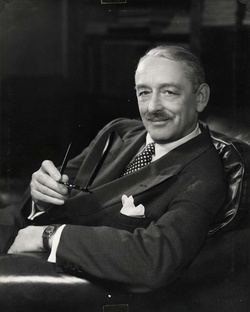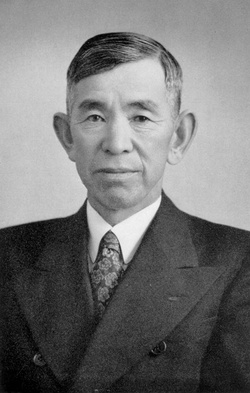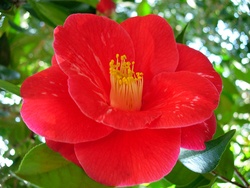At first glance, a botanical garden may seem an unlikely place to find hidden stories.
But David R. Brown knows many interesting narratives behind green spaces.
“Around every corner there is a story or a scene or a vignette that speaks to you—if your eyes and ears are open,” says Brown, who has been Executive Director of Descanso Gardens in La Cañada Flintridge, California, since 2005.
“Our history is part of the landscape,” he says. “And we encourage people to learn a little bit about how this beautiful place came to be; why it is the way it is.”
One of the lesser-known aspects of that history, says Brown, is that it has important connections to Southern California’s Japanese American community. In particular, the gardens’ famed camellia collection—believed to be the largest in the world—has its origins in the nurseries of two local Japanese American families.

What we know today as Descanso Gardens, Brown says, was once the home and ranch of the Los Angeles Illustrated Daily News newspaper publisher and owner E. Manchester Boddy and his wife, Berenice. It was formerly known as Rancho del Descanso (which means “ranch of rest” in Spanish). Boddy (pronounced “BOH-dee”) was an avid amateur horticulturist with a particular interest in plants of Asian origin, which included the camellia. He began his camellia collection in the late 1930s, and was believed to have purchased plants from local nurseries, some of which were owned and operated by Japanese Americans.
“The camellia fascinated people from the Midwest and East Coast,” says Brown. “It was green and leafy year-round. It blossomed in the winter! Its blossoms came in countless colors from white to dark red. It rebounded happily from pruning and could be maintained as a small shrub or left to grow into a small, robust tree-like form. It was relatively hardy in the Mediterranean climate of Los Angeles and yet it was exotic and highly prized.” By the early 1940s, the camellia became a highly popular landscaping plant in the San Gabriel Valley and across the fast-growing Los Angeles basin.
Then came December 7, 1941. The Japanese attacked Pearl Harbor and the United States entered World War II. Following the issuance of Executive Order 9066, more than 120,000 Americans of Japanese descent were forced into unjust mass-incarceration. In the process, Japanese American families faced financial ruin as they were forced to sell their homes and businesses on short notice, for a fraction of their true value.
Brown says that Boddy was sympathetic to the plight of Japanese Americans. “He was an admirer of Japanese culture and of Japanese Americans living and working in California,” Brown notes. “He wrote a noteworthy 1921 book, Japanese in America, which extolled the culture, work ethic, and contributions of the Japanese who had immigrated to the United States.

“Mr. Boddy decided to purchase virtually the entire inventory of camellias of the Star Nursery, owned by Mr. F. M. Uyematsu prior to the Uyematsu family’s removal to Manzanar,” says Brown. “This consisted of either 60,000 or 100,000 plants—the scant records we have differ. And although we don’t have a formal receipt, eyewitnesses to the transaction reported that the price offered was satisfactory and immediately accepted by Mr. Uyematsu. The purchase included many, many copies of a few types highly desired in the landscaping community, primarily Camellia japonicas with a sprinkling of Camellia sasanquas.”
“His purchase was in the spirit of a business investment, not assembling a synoptic botanical collection,” says Brown. “Along with his ranch manager, Howard Asper, who was a well-known authority and hybridizer of camellias, Mr. Boddy proceeded to plant the camellias in the shade of the Coast live oak trees on about 25 acres of his Rancho property to create a camellia plantation and an entrée into the cut flower business.”
The move was a boon to the plants. “The camellias thrived in the cool shade of the oaks and in the rich soil provided by eons of oak-leaf litter,” Brown explains. “Mr. Boddy acquired additional property in the San Gabriel Mountain foothills that included a year-round source of ground water and piped it several miles across the valley floor and into his ranch to irrigate the camellias. For a few years, his business of shipping fresh flowers in the winter to markets in the Midwest and East Coast was quite successful.”
At roughly the same time as he acquired the Uyematsu camellias, says Brown, Boddy also purchased the Mission Nursery business owned by the Yoshimura family in San Gabriel. The Mission Nursery was believed to have also included substantial numbers of camellia plants.

(Courtesy of Descanso Gardens)
“Boddy is reported to have paid a fair price for the property and business and continued to operate it while the Yoshimuras were interned at the Gila River, Arizona camp,” says Brown. “When the family was released in 1945, they returned to the San Gabriel Valley and re-established their business directly across the street (San Gabriel Boulevard) from their original nursery, where it continues to thrive to this day.
“The San Gabriel Nursery website offers an extensive history of the Yoshimura family,” says Brown. “It is well worth reading for its insights into the quality and texture of life for an entrepreneurial Japanese American family from early in the 20th century onward. The Nursery is a fixture in the nursery trade and landscaping business and offers discounts to members of both The Huntington gardens and Descanso Gardens.”
In the early 1950s, Boddy became interested in opening his ranch to the public, and then later decided to sell his property. Though there were many who were interested, the property was eventually purchased by the County of Los Angeles. Over the next half-century, says Brown, Boddy’s camellia collection, obtained from the Uyematsu family and the Yoshimura family, became augmented with selected acquisitions of many different types of camellias. It now numbers approximately 16,000 individual plants and more than 600 species and cultivars.
The resulting collection, Brown says, is significant in four ways. “First, it started out as a commercial enterprise rather than as a true botanical collection, and has evolved in that direction (that is, toward a true ‘collection’) ever since Boddy’s sale to Los Angeles County.”
Brown credits the subsequent development and management of the property by the Descanso Gardens Guild, a support group founded in 1957 and which today manages the Gardens on behalf of the County.
“Second, it is huge!” Brown continues. “Possibly the largest single concentration of camellias in any one garden in the world.”
“Third, it is the only concentration of plants we know of that is located in an oak forest landscape, with the leafy canopy of the oaks supplying the camellias with much needed shade from the summer sun and temperatures. This landscape many find extremely interesting, restful, and eloquent.”
“And fourth, it has been selected as one of very few camellia gardens in the world as an ‘international garden of excellence’ by the International Camellia Society.”
Brown maintains that the camellias are special enough plants to merit the attention. They grow slowly but have very long lifespans. Brown mentions that there are documented camellias in southeast Asia that are more than one thousand years old. He adds that the camellia also has an unusual readiness to hybridize easily to produce a nearly endless variety of flowers of different sizes, shapes, shades of pink and red, and fragrances. “Some estimates for the number of different types of camellias now alive in the world range up to 3,500!”
Beyond its camellia collection, Descanso Gardens has other aspects that relate to Japanese American history and culture. An example is the one-acre Japanese-style garden and teahouse that was designed and built in the 1960s, when Japanese-style gardens were very popular in the United States and coincided with the “sister-city” movement.
“The Japanese-style garden was the second major project initiated by the all-volunteer Descanso Gardens Guild,” says Brown. He says that the Guild leaders engaged the Japanese American community at the time for their design expertise and garden expertise. The garden was built entirely by the volunteers.
“This beautiful garden has special significance to me because it is tangible, enduring recognition of the role/contribution of Japanese Americans in the very existence of Descanso,” says Brown. “If Mr. Boddy had not purchased those camellias from the Uyematsu and Yoshimura families, there would in all likelihood not be a Descanso Gardens for the public to enjoy today.”
“I think he would be very pleased, proud, and maybe even touched by what has happened to his beloved Rancho del Descanso,” Brown says. “It has turned out to be almost exactly what he envisaged for it back in the early 1950s. I’m sure he would also be surprised to see his camellias 50 years later, some of them having grown into magnificent trees. And one thing is for sure: he would be amazed to find his estate in once sleepy La Cañada Flintridge now attracting over 300,000 visitors a year!”
* * * * *
JANM Members Invited to Descanso Gardens’ Camellia and
Tea Festival
Sunday, March 1, 2015
Descanso Gardens invites Japanese American National Museum members to enjoy its award-winning camellia collection, recognized as the largest in North America. Partly built with plants supplied by F.M. Uyematsu of Star Nursery and F.W. Yoshimura of Mission Nursery as incarceration loomed in 1942, the collection is uniquely tied to local Japanese American history.
© 2015 Japanese American National Museum






